
WPC Wall Panel Design Trends for 2025: Modern Patterns & Finishes

Walk into any newly designed home or commercial space today, and you'll notice something: walls are no longer just boundaries. They're stories. They set moods, reflect personalities, and even adapt to the way we live. In this era of intentional design, one material has risen to the top as the unsung hero of interior transformation: WPC wall panels. As we step into 2025, the world of interior decoration materials is evolving faster than ever, and WPC (Wood-Plastic Composite) wall panels are leading the charge with fresh patterns, innovative finishes, and a versatility that caters to both residential and commercial dreams. Let's dive into the trends shaping how we'll dress our walls this year—and why they matter.
What Makes WPC Wall Panels a 2025 Favorite?
Before we jump into trends, let's get grounded in why WPC wall panels have become a go-to choice for designers and homeowners alike. For the uninitiated, WPC blends wood fibers and plastic polymers, creating a material that marries the best of both worlds: the warmth of wood and the durability of plastic. Unlike traditional wood panels, they resist moisture, scratches, and warping—making them perfect for high-traffic areas like kitchens and bathrooms. They're also eco-friendly, often crafted from recycled materials, which aligns with 2025's growing focus on sustainable design. But what truly sets them apart in 2025 is their adaptability. Today's WPC wall panel solutions aren't just "panels"—they're customizable, design-forward tools that let creators turn any wall into a focal point.
Whether you're a homeowner looking to refresh your living room or a commercial designer aiming to make a hotel lobby unforgettable, WPC panels offer a blank canvas. And with the right wpc wall panel supplier, the possibilities stretch even further—from custom patterns to finishes that mimic rare materials without the environmental cost. It's no wonder they're stealing the spotlight in interior decoration materials this year.
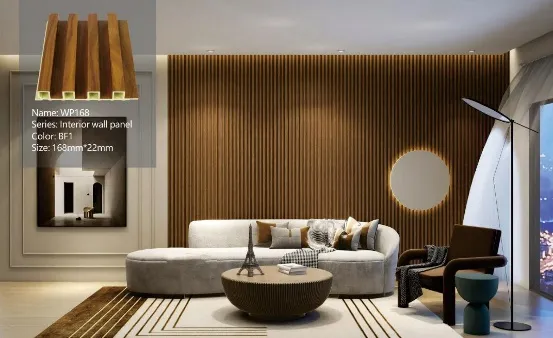
2025 Design Trends: Patterns That Tell a Story
Gone are the days of plain, one-note wall panels. 2025 is all about patterns that add depth, personality, and even narrative to a space. Let's break down the top patterns dominating design boards this year.
1. Geometric Minimalism with a Twist
Minimalism isn't going anywhere, but in 2025, it's getting a playful upgrade. Think clean lines and sharp angles, but with unexpected details. Herringbone patterns, for example, are being reimagined in varying widths—some planks thicker, some thinner—to create a dynamic, almost rhythmic effect. Chevron patterns, too, are making a comeback, but in softer color palettes: think warm beiges paired with muted grays, or earthy greens with off-whites. These patterns work beautifully in modern offices, where they add sophistication without overwhelming the space, or in residential dining rooms, where they frame a statement table.
What's driving this trend? Our collective desire for calm in a chaotic world, balanced with a need for subtle visual interest. Geometric minimalism doesn't shout—it whispers, "I've been thoughtfully designed." And when paired with WPC's smooth texture, these patterns feel both modern and timeless.
2. Organic Textures: Bringing the Outdoors In
Biophilic design—the idea that connecting with nature improves well-being—continues to influence 2025 trends, and WPC panels are embracing it wholeheartedly. This year, organic textures are king: think wood grains so realistic you'll reach out to touch them, stone-like patterns that mimic riverbeds or mountain slopes, and even abstract "leaf vein" or "bark" textures that add a tactile, earthy feel. These patterns aren't just about looks; they're about creating spaces that feel grounded and alive.
One standout example is the "weathered oak" pattern, which features subtle knots, grain variations, and a matte finish that mimics aged wood without the maintenance hassle. It's perfect for cozy living rooms or cabin-inspired bedrooms. Then there's the "slate stone" texture, with its cool gray tones and natural cleft lines, ideal for adding a spa-like vibe to bathrooms or home offices. The best part? These organic patterns are often available through wpc wall panel suppliers who specialize in hyper-realistic finishes, so you get the beauty of natural materials without the upkeep.
3. Bold Accent Walls: Maximalism Meets Intentionality
While minimalism holds strong, 2025 is also seeing a rise in bold accent walls—think large-scale patterns, vibrant colors, or mixed materials. But this isn't 2010s maximalism; it's maximalism with intention. A single wall in a living room might feature a bold geometric print (like oversized hexagons or overlapping circles) in contrasting colors (navy and gold, emerald and cream) to anchor the space. Or, in a commercial setting like a restaurant, a feature wall could combine WPC panels with metal accents or mirrored strips for a glamorous, eye-catching effect.
The key here is balance. A bold accent wall works best when paired with neutral furniture and soft lighting, letting the pattern take center stage without overwhelming the room. And with WPC's durability, even high-traffic accent walls (like in a hotel lobby) can maintain their vibrancy for years—making them a smart investment for commercial spaces.
4. 3D and Tactile Patterns: Engaging the Senses
2025 is all about engaging more than just the eyes—and 3D WPC wall panels are leading the charge. These panels feature raised or recessed designs that add depth and texture, turning a flat wall into a tactile experience. Imagine running your hand over a panel with a "wave" pattern, where gentle peaks and valleys create shadow and movement as light shifts throughout the day. Or a "brickwork" texture with slightly protruding edges that mimic the look of traditional masonry but with the lightweight ease of WPC.
These tactile patterns are particularly popular in sensory spaces, like home theaters (where the texture enhances the cozy, immersive feel) or pediatric clinics (where soft, rounded 3D patterns calm anxious children). They're also making waves in luxury retail, where brands use them to create memorable storefronts that stand out in crowded malls. When paired with strategic lighting, 3D WPC panels become works of art—proving that walls can be more than just backdrops; they can be experiences.
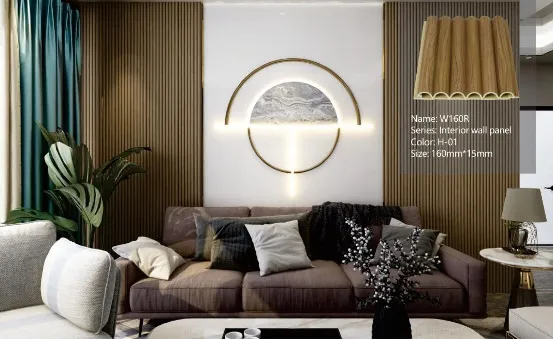
Finishes That Define 2025 Spaces: More Than Just "Shiny" or "Matte"
If patterns are the "what" of 2025 wall design, finishes are the "how." They determine how light interacts with the wall, how the texture feels, and even how the space is perceived. This year, finishes are getting smarter, more customizable, and more aligned with real-life needs. Let's explore the top finishes making waves.
| Finish Type | Key Features | Best For | Why It's Trending |
|---|---|---|---|
| Matte Natural | Soft, non-reflective surface; mimics natural materials like wood or stone | Residential living rooms, bedrooms, home offices | Creates a calm, cozy atmosphere; hides fingerprints and dust |
| High-Gloss Metallic | Shiny, reflective finish with metallic undertones (gold, silver, copper) | Commercial lobbies, restaurants, accent walls | Adds luxury and drama; pairs well with modern lighting |
| Textured Matte | Matte surface with tactile texture (e.g., sandblasted, brushed) | Bathrooms, kitchens, high-traffic areas | Slip-resistant; adds depth without glare |
| Stain-Resistant Satin | Semi-gloss finish with a protective layer; repels liquids and stains | Family homes, rental properties, commercial kitchens | Practical for busy spaces; easy to clean with a damp cloth |
| Custom Color-Matched | Tailored to specific Pantone or brand colors | Brand spaces, themed rooms, personalized homes | Allows for unique, one-of-a-kind design; reinforces brand identity |
Matte Reigns Supreme (But Not Alone)
Matte finishes have been popular for years, and 2025 is no exception—but this year, it's about "matte with meaning." Matte WPC panels now come in a range of textures, from ultra-smooth to slightly rough (like "sanded wood"), giving designers more control over the room's feel. A smooth matte finish in a light neutral (ivory, soft gray) can make a small room feel larger and airier, while a textured matte finish in a warm brown adds coziness to a bedroom.
That said, high-gloss finishes are making a comeback in niche spaces. Think: a high-gloss black WPC panel accent wall in a modern home office, paired with chrome desk accessories and white furniture for a sleek, professional look. Or a gold-metallic high-gloss panel in a hotel elevator lobby, reflecting light and adding a touch of glamour. The key is to use high-gloss sparingly—too much can make a space feel cold, but when used intentionally, it's showstopping.
Stain-Resistant and Easy-Clean Finishes: Practicality Meets Beauty
Let's be real: no one wants to spend hours cleaning wall panels. That's why 2025's top finishes prioritize practicality. Many WPC wall panel solutions now include a protective top layer that repels stains, water, and even mold. This is a game-changer for families with kids, pet owners, or commercial spaces like cafes and hotels where spills are inevitable.
Take, for example, a "satin stain-resistant" finish. It has a subtle sheen that hides minor scratches, and a quick wipe with a damp cloth removes coffee spills or crayon marks. For hospitals or schools, this finish is a no-brainer—but it's also becoming a favorite in residential kitchens and bathrooms, where functionality is just as important as style. A reliable wpc wall panel supplier will often highlight these practical finishes, ensuring customers get both beauty and peace of mind.
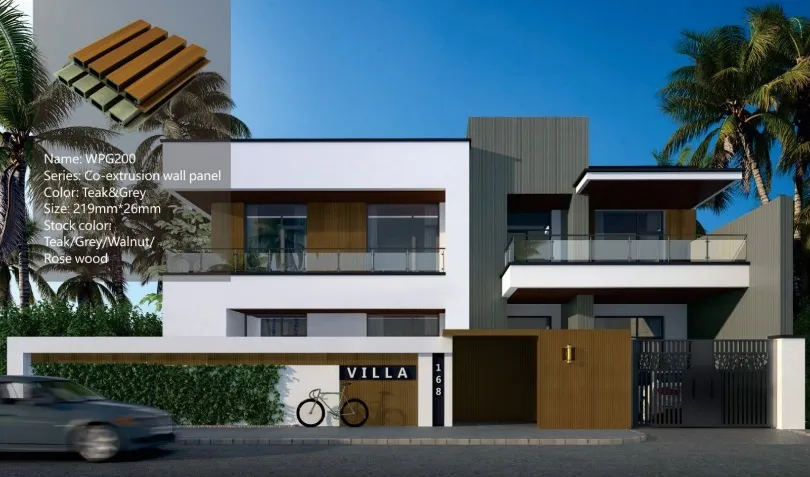
Where WPC Wall Panels Shine in 2025: Residential and Commercial Spaces
WPC wall panels aren't limited to one type of space—in 2025, they're popping up everywhere, from tiny apartments to sprawling office complexes. Let's explore how they're being used in different settings.
Residential Spaces: Making Homes Feel Like "You"
In homes, WPC panels are all about personalization. In the living room, a wood-grain matte panel wall can serve as a backdrop for a gallery of family photos, adding warmth without competing with the memories. In the kitchen, moisture-resistant WPC panels (with a stain-resistant finish, of course) are replacing traditional tile backsplashes, offering a seamless, easy-to-clean surface that complements cabinetry. And in bathrooms, WPC panels with stone-like textures are creating spa vibes—imagine a "marble" WPC accent wall behind the bathtub, minus the cost and weight of real marble.
Bedrooms are also getting love from WPC. Soft, neutral-toned panels with subtle organic patterns (like "cloud" or "feather" textures) create a calming atmosphere, perfect for winding down. And home offices? They're using bold geometric WPC panels to inspire creativity—think a navy and white chevron wall behind a desk, keeping the space energizing but not distracting.
Commercial Spaces: Branding Through Design
In commercial settings, WPC wall panels are tools for branding and customer experience. Hotels, for example, are using custom-colored WPC panels in lobbies to match their brand palettes, creating a cohesive, memorable first impression. Restaurants are opting for textured WPC accent walls in warm tones (rust, terracotta) to evoke a cozy, inviting feel, encouraging guests to stay longer. Office spaces, meanwhile, are using WPC panels to divide open-concept areas—think a partial wall with a 3D geometric pattern that adds privacy without closing off the space.
Even healthcare facilities are joining in. Many hospitals and clinics are choosing WPC panels with Class A fireproof ratings (though not the specific CPL inorganic board mentioned earlier) for their durability and easy cleaning, ensuring spaces stay safe and hygienic. The key here is that WPC wall panel solutions are versatile enough to meet the unique needs of any commercial project—whether it's high traffic, strict safety codes, or the need to reflect a brand's identity.
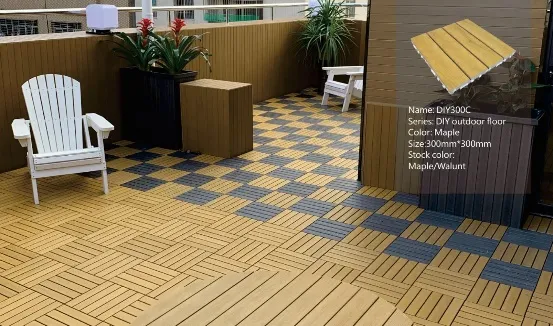
Sustainability: A Core Trend in 2025 WPC Design
If there's one trend that underpins all others in 2025, it's sustainability. Today's consumers and designers don't just want beautiful spaces—they want spaces that align with their values. WPC wall panels excel here, and 2025 is seeing even more innovations in eco-friendly design.
Many WPC panels are now made with recycled plastic (from bottles and packaging) and reclaimed wood fibers, reducing the demand for virgin materials. Some manufacturers also use low-VOC (volatile organic compound) adhesives and finishes, ensuring the panels don't off-gas harmful chemicals into the air—a must for homes with kids or anyone with allergies. Additionally, WPC's longevity means fewer replacements over time, reducing waste.
Sustainability also extends to production. Forward-thinking wpc wall panel suppliers are investing in renewable energy (like solar-powered factories) and water-saving manufacturing processes, further reducing their environmental footprint. For eco-conscious buyers, this transparency matters—so when choosing a supplier, look for those who prioritize sustainability in both materials and production.
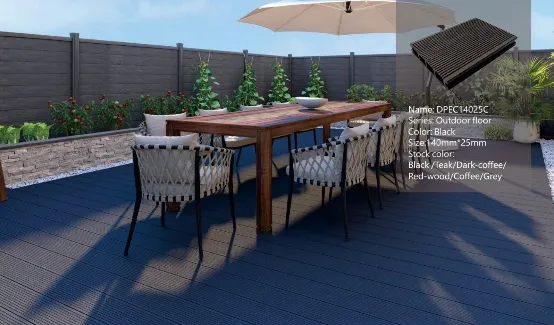
Pairing WPC Walls with Flooring: Cohesive Design Solutions
A truly polished space isn't just about walls—it's about how walls and floors work together. In 2025, designers are increasingly turning to coordinated wall and flooring solutions to create seamless, cohesive spaces. And since many wpc wall panel suppliers also offer flooring options (or partner with flooring suppliers), it's easier than ever to match materials.
For example, a living room with "weathered oak" WPC wall panels could pair beautifully with matching oak-look WPC flooring, creating a unified, warm feel. Or, for a more dynamic look, a kitchen with bold geometric WPC walls might use neutral-toned flooring (like gray vinyl planks from a trusted flooring supplier) to balance the space. The key is to choose complementary colors and textures—think of walls and floors as a team, not separate elements.
This coordination isn't just about aesthetics; it's about practicality, too. Using similar materials (like WPC walls and WPC flooring) ensures consistent durability throughout the space, making it easier to clean and maintain. And when you work with suppliers who offer both wall and flooring solutions, you can often save time and money on installation—plus, you'll have peace of mind knowing the materials are designed to work together.
Choosing the Right WPC Wall Panel Supplier: What to Look For
With so many trends and options, finding the right wpc wall panel supplier is key to bringing your vision to life. Here's what to keep in mind:
- Quality Materials: Ask about the wood-to-plastic ratio, recycled content, and durability testing. A reputable supplier will be transparent about their materials.
- Customization Options: Do they offer custom patterns, colors, or finishes? The best suppliers understand that one size doesn't fit all.
- End-to-End Solutions: Look for suppliers who offer more than just panels—installation guidance, after-sales support, and even design consultations. Wpc wall panel solutions should be comprehensive.
- Sustainability Practices: As we've discussed, sustainability matters. Ask about their manufacturing processes and eco-friendly certifications.
- Portfolio and Reviews: Check out their past projects and read customer reviews to ensure they deliver on their promises.
Remember, a good supplier isn't just a vendor—they're a partner in your design journey. They'll help you navigate trends, choose the right patterns and finishes, and ensure the final result is both beautiful and functional.
Wrapping Up: WPC Wall Panels—More Than a Trend, a Design Revolution
As we move through 2025, it's clear that WPC wall panels aren't just a passing trend—they're a design revolution. With their blend of durability, sustainability, and endless customization options, they're reshaping how we think about walls. Whether you're drawn to organic textures, bold geometric patterns, or practical stain-resistant finishes, there's a WPC solution for every space and style.
So, whether you're a homeowner ready to refresh your space or a commercial designer aiming to make a statement, consider WPC wall panels. And when you do, partner with a wpc wall panel supplier who understands your vision and offers the solutions to bring it to life. After all, in 2025, walls aren't just walls—they're the heart of your space. Make them count.
Tags:
Recommend Products










